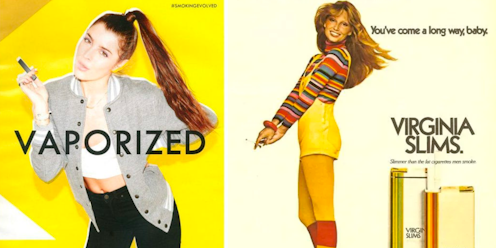A potted history of smoking, and how we're making the same mistakes with vaping
- Written by Simon Chapman, Emeritus Professor in Public Health, University of Sydney

When smoking first became popular we were told it was healthy, it was heavily marketed (including to young people) as being cool, and the time it took for us to learn otherwise was long, and came too late for many. Unfortunately, it seems history is repeating itself with vaping.
Before the invention of machines to make cigarettes, they were hand-rolled – with an experienced roller making around 240 cigarettes an hour. When mechanisation arrived in the late nineteenth century, early machines could make 12,000 per hour. Eventually, they could churn out 1.2 million an hour.
This made smoking immensely affordable, accessible to those on even meagre incomes. These machines would go on to become perhaps the worst development in public health history.





